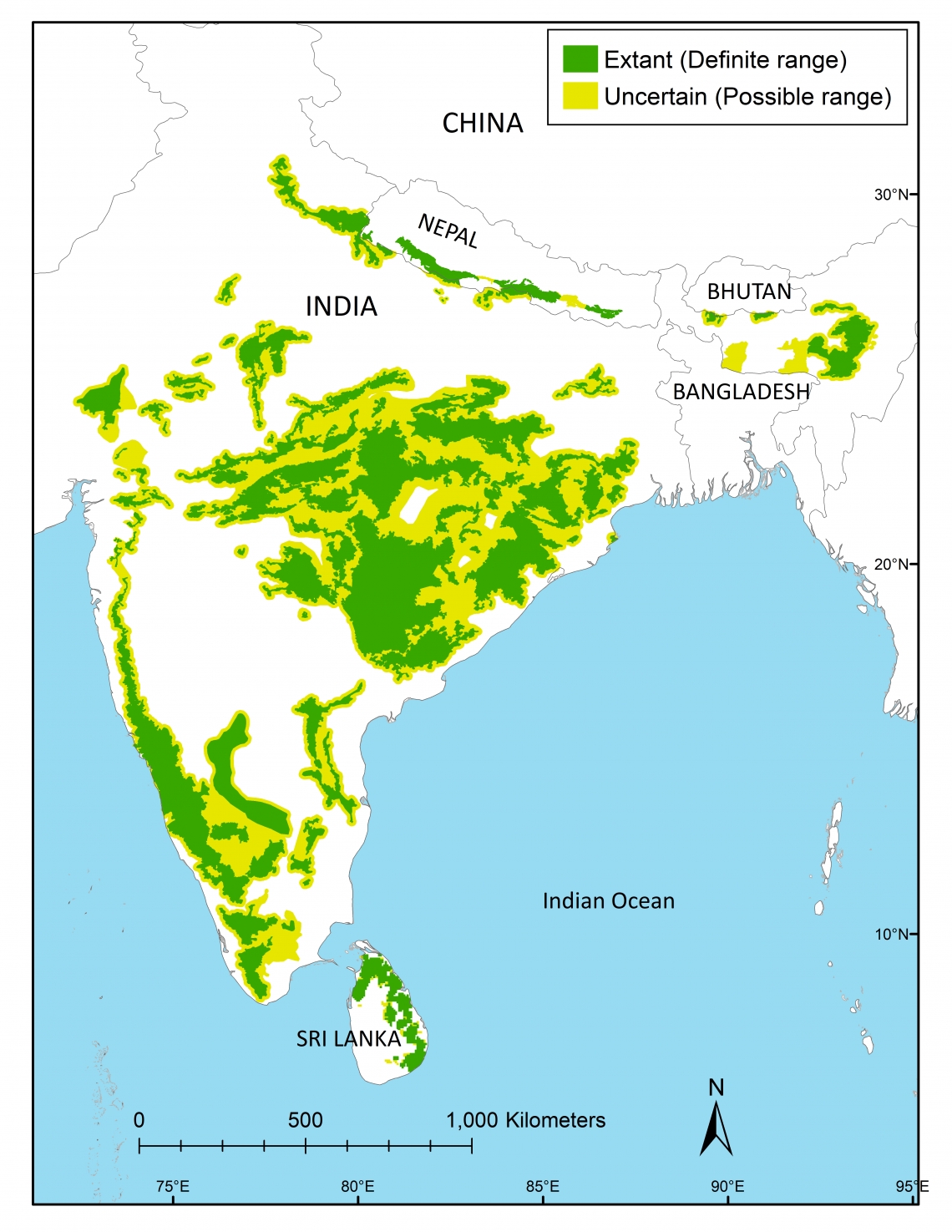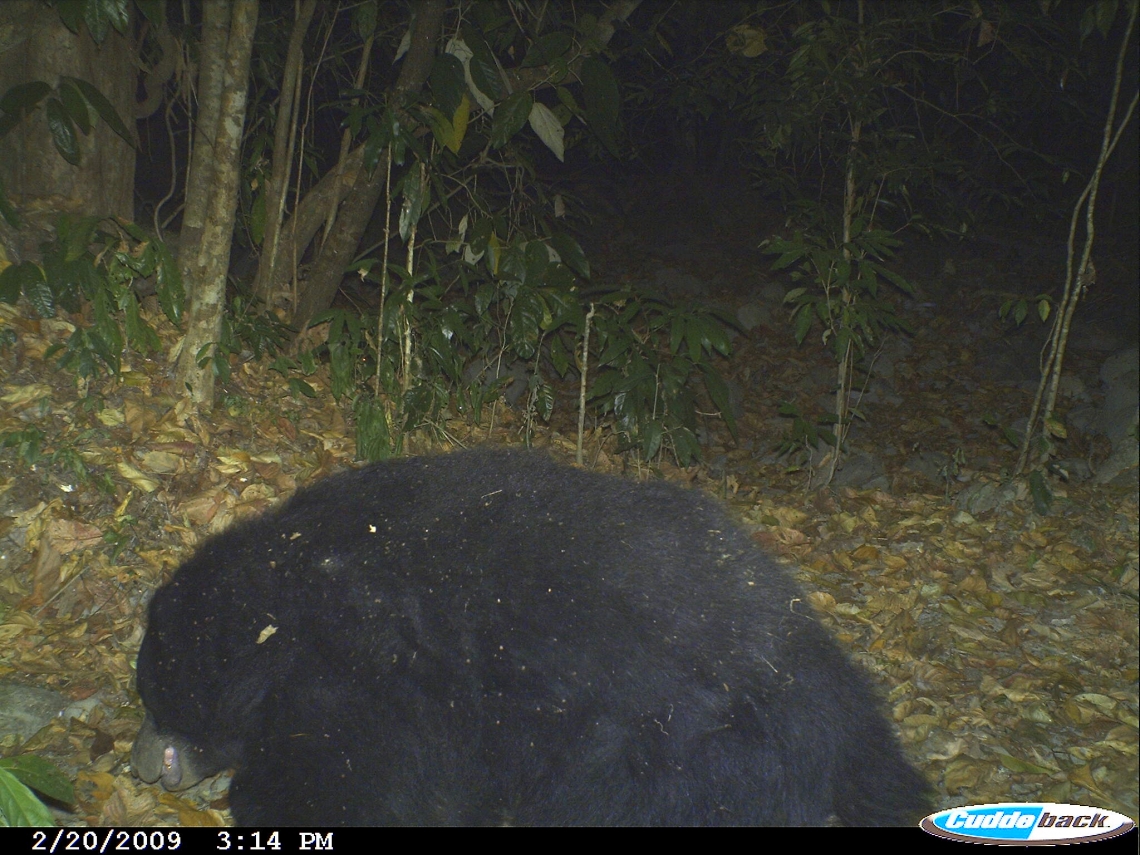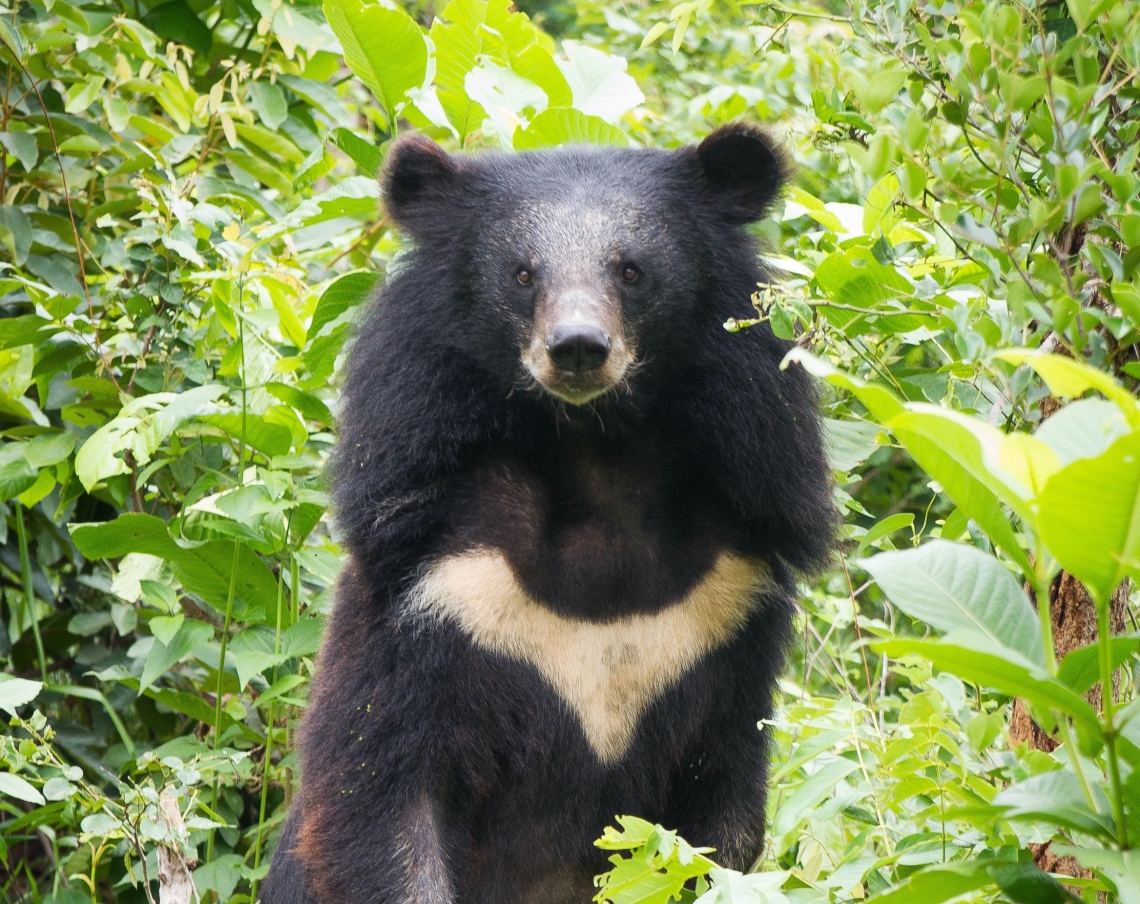Distribution: Range is restricted to the Indian subcontinent, with at least 90% of the area in India. Sloth bears presently occupy parts of 22 Indian states, and there is no evidence, presently or historically, that this species ranged west into Pakistan or crossed east into Myanmar. Northward they are limited to low elevations and presence of termites.

Range map of sloth bear (M ursinus) mapped by Bear Specialist Group created by M Proctor
Range countries: (probably 3): India, Nepal, Sri Lanka, historically in Bangladesh, uncertain in Bhutan.
Extirpation: The last documented records of sloth bears in Bangladesh were in the mid-1990s. Surveys in areas where they formerly occurred indicate that they have been extirpated from this country. Presence of sloth bears in Bhutan is ambiguous. The only verified documentation is one camera trap photo, 2 km from the Indian border, taken in 2009. Extensive camera trapping in Bhutan yielded many bear photos, some initially thought to be sloth bears but were mis-identified Asiatic black bears. Historical evidence for their presence in Bhutan is completely lacking even though it has been supposed based on the availability of lowland habitat adjacent to a sloth bear population in India.

Sloth bear_M ursinus_ Royal Manas NP Bhutan_only sloth bear photo in Bhutan_Y Wangdi Dept Forest and Park Services RMNP
Elevational range: Primarily a lowland species (<500 m), but have been observed up to 2,000 m in the Western Ghats as well as in northern India.
Overlap with other bear species: Sloth bears overlap Asiatic black bears in one small area in the Indian state of Uttarakhand (Corbett and Rajaji National Parks, and Haldwani and Haridwar Forest Divisions) within the Terai arc, but anecdotal evidence suggests that they do not overlap at a fine scale (Asiatic black bears use higher elevations). Moving eastward, their ranges diverge such that only sloth bears occur in the Terai of Nepal (with rare presence of a few Asiatic black bears). Farther eastward, their ranges may overlap in some parts of northeastern India. It is unclear whether there are any sites in Northeast India where sloth bears, Asiatic black bears, and sun bears all coexist (or ever coexisted at a fine scale).

Asiatic black bear_U thibetanus_Cambodia bear sanctuary_Free the Bears